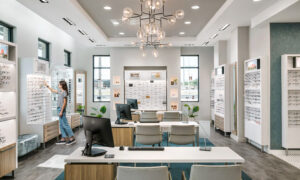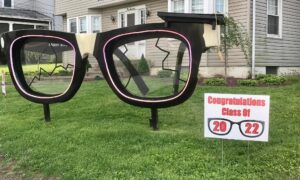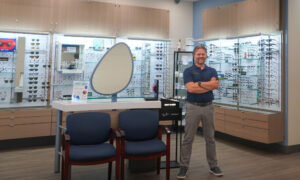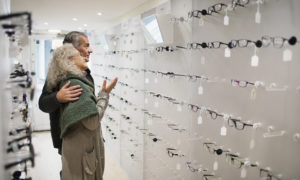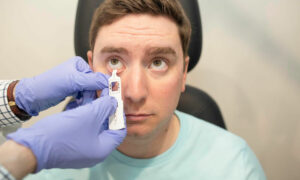Barbara Wright of Barbara Wright Design shows how she designs the physical space of an optometry office to meet HIPAA requirements for patient privacy. “If you design in privacy beginning with the plans,” she advises, “you’ll have an office where private conversations remain private.”
KEY DESIGN POINTS
Locate patient records out of sight; position computer monitors where privacy can be maintained
Build complete rooms with sound batting so that private doctor/patient conversations cannot be overheard
Create a privacy area at the payment station
Looking at New Space: How Wide to Make it Work?
Barbara Wright, of Barbara Wright Design, advises that, when considering a new space for your office and dispensary, take a critical look at the width of the space. A 15-foot-wide space presents a series of challenges that may affect your ability to comfortably and efficiently conduct exams while limiting the inventory you can carry and display. In a series of diagrams and photos, she shows how many of those challenges are solved by a space that is 20 feet or even 25 feet wide. “If you want to WOW patients, wider is better,” she says.
Principles of Optical Design: Retaining Existing Design Features
Barbara Wright, of Barbara Wright Design, transformed a former clothing store into a one-of-a-kind optometry practice and optical dispensary. The key was to retain impressive design features that provided great character while strategically adding furniture and displays that facilitated functionality and patient flow.
.
Barbara Wright is president of Barbara Wright Design in Smyrna, Tenn. To contact her: info@bwdesign.info

